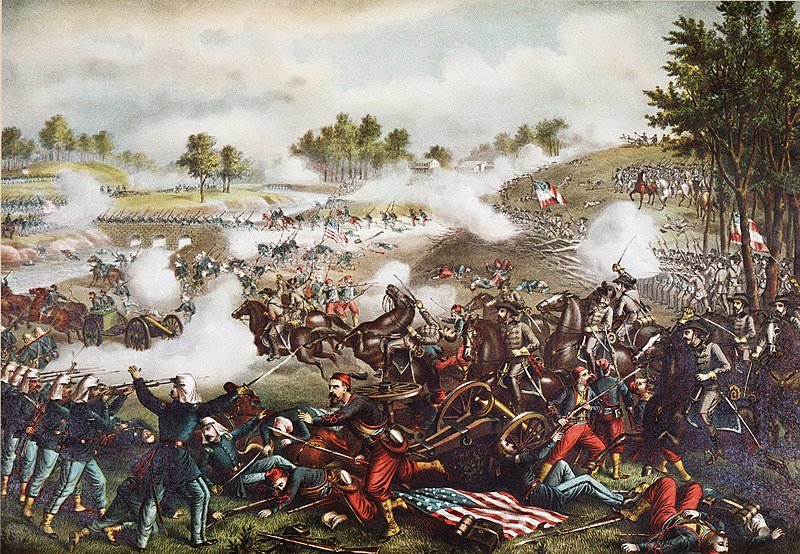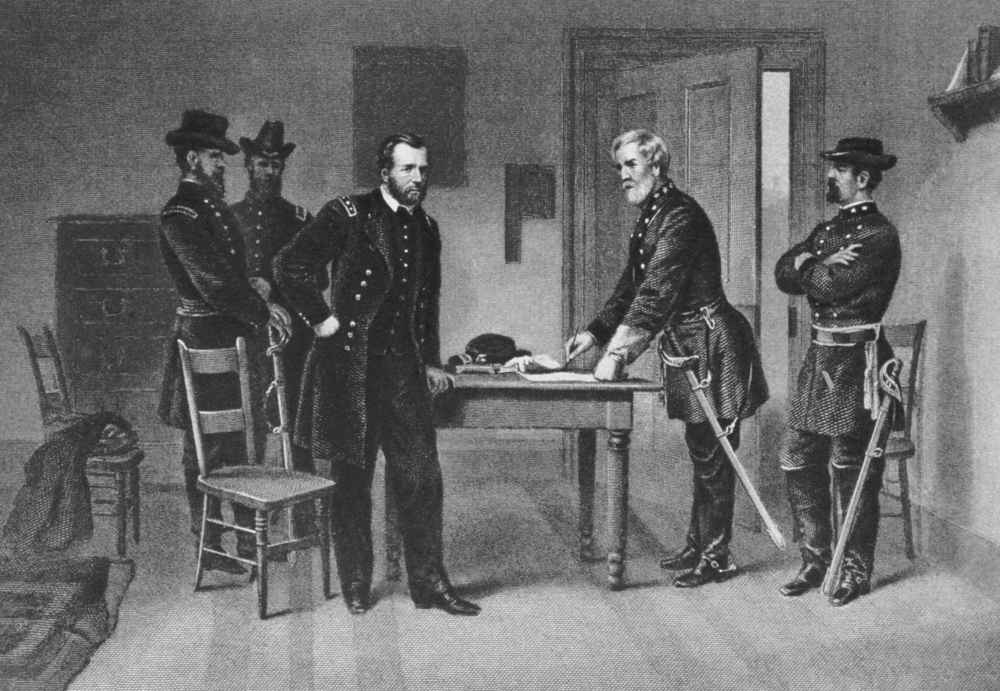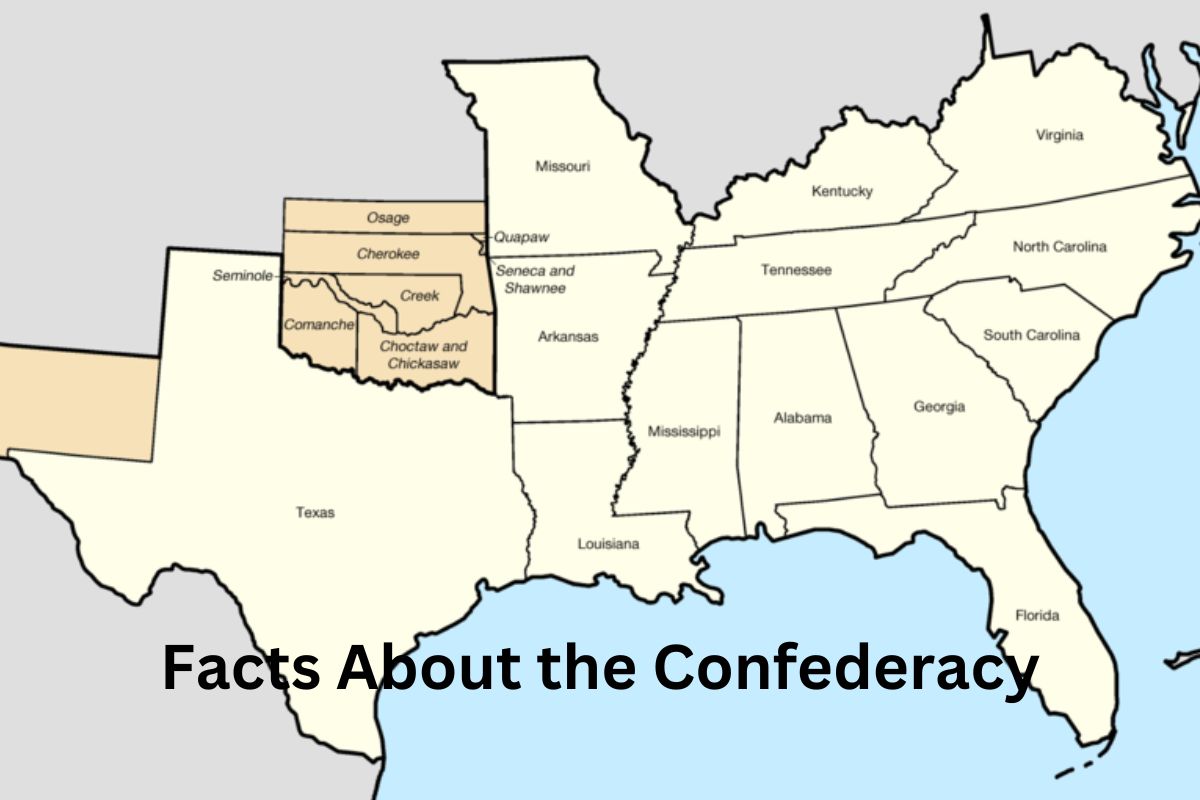The Confederacy, officially known as the Confederate States of America (CSA), was a breakaway nation that existed from 1861 to 1865 during the American Civil War.
It was formed by 11 Southern states that seceded from the United States in response to the election of Abraham Lincoln as President, fearing his policies would threaten the institution of slavery.
The Confederacy’s capital was initially Montgomery, Alabama, and later moved to Richmond, Virginia. Slavery was a cornerstone of the Confederacy’s economy and society, and its constitution closely resembled that of the United States, but with specific provisions protecting and promoting slavery.
The Confederacy faced economic and logistical challenges, had a smaller population and limited industrial capacity compared to the Union, and was led by General Robert E. Lee.
Ultimately, the Confederacy surrendered to the Union, leading to the eventual readmission of Confederate states to the United States and the abolition of slavery.
Confederate Army Facts
1. Formed during the American Civil War (1861-1865)
The Confederacy emerged as a separate political entity during the American Civil War, which was fought between the Northern states (the Union) and the Southern states (the Confederacy).

The war was primarily driven by the deep-rooted disagreements over issues like slavery, states’ rights, and the balance of power between the federal government and the states.
2. Comprised of 11 Southern states that seceded from the United States
The Confederate States of America consisted of 11 Southern states that seceded from the United States between December 1860 and June 1861.
These states were:
- South Carolina
- Mississippi
- Florida
- Alabama
- Georgia
- Louisiana
- Texas
- Virginia
- Arkansas
- Tennessee
- North Carolina
These states believed that their economic, social, and political interests were not being adequately protected by the Union and chose to form their own nation.
3. Capital was initially Montgomery, Alabama, and later moved to Richmond, Virginia
The provisional capital of the Confederacy was Montgomery, Alabama, where the Confederate government was established in February 1861.
The capital was later shifted to Richmond, Virginia, in May 1861, as it was more centrally located among the Southern states and offered better logistical advantages for the Confederacy’s war efforts. Richmond remained the capital until it fell to Union forces in April 1865.
The choice of capital reflected the Confederacy’s desire to establish a government that was distinct from the Union and represented the interests of the Southern states.
Montgomery, Alabama, was selected as the temporary capital due to its symbolic significance as the first state to secede. Richmond, with its historical importance and strategic location, became the political and industrial center of the Confederacy throughout most of the war.
4. Confederate Battle Flag is often associated with the Confederacy
The Confederate Battle Flag, also known as the “Southern Cross,” is a well-known symbol associated with the Confederacy. It features a blue diagonal cross with white stars on a red background.

Although this flag is often associated with the Confederacy, it was not the official flag of the Confederate States of America. It was primarily used as a battle flag by the Army of Northern Virginia under General Robert E. Lee.
Over time, it has become a controversial and divisive symbol, representing different things to different people.
5. Slavery was a key component of the Confederate economy
Slavery played a central role in the Confederate economy and society. The Southern states relied heavily on slave labor in agriculture, particularly in the cultivation of cash crops like cotton, tobacco, and sugar.
The institution of slavery was deeply ingrained in the social and economic fabric of the Confederacy. Many seceding states explicitly cited the protection of slavery as a reason for leaving the Union. The Confederate government staunchly defended the institution and sought to preserve it during the Civil War.
6. Confederate states had a constitution resembling that of the United States, with provisions protecting slavery
The Confederate Constitution, adopted in March 1861, closely resembled the United States Constitution. However, it contained specific provisions that protected and perpetuated the institution of slavery.

The Confederacy’s constitution explicitly recognized and protected the right to own slaves and prohibited the Confederate government from interfering with the institution. This demonstrated the centrality of slavery to the Confederate cause and the desire to establish a separate nation where slavery would be secure.
7. Faced economic and logistical challenges during the war
The Confederacy encountered numerous economic and logistical challenges during the Civil War. The Southern states had a smaller industrial base compared to the more industrialized Northern states.
This limited their ability to produce weapons, ammunition, and other essential war supplies. The Confederacy also faced difficulties in transportation and communication, as the Union blockade significantly impacted their ability to trade internationally and move resources within their territory.
These challenges contributed to shortages of food, supplies, and manpower, which ultimately weakened the Confederate war effort.
8. Had a smaller population and limited industrial capacity compared to the Union
The Confederate states had a smaller population and less industrial capacity compared to the Union. The North had a larger population and a more developed industrial base, allowing it to mobilize more resources for the war effort.
This population and industrial disparity gave the Union a significant advantage in terms of manpower, production capabilities, and overall economic strength, which played a crucial role in the ultimate outcome of the war.
9. Led by General Robert E. Lee, a renowned military commander
General Robert E. Lee emerged as one of the most prominent and respected military commanders for the Confederacy. He served as the commanding general of the Confederate Army of Northern Virginia and is often hailed for his tactical brilliance.
Lee led his forces in several major battles, including:
- The Second Battle of Bull Run
- Fredericksburg
- Chancellorsville
- Gettysburg
Despite his strategic skills, Lee’s army faced mounting challenges and was eventually overwhelmed by the Union’s superior resources and manpower.
10. Emancipation Proclamation declared slaves in Confederate territory to be freed
The Emancipation Proclamation, issued by President Abraham Lincoln on January 1, 1863, declared that all slaves held in Confederate territory were to be set free. However, it is important to note that the Emancipation Proclamation did not immediately free any slaves.
It applied only to areas that were still under Confederate control, where the Union had limited practical authority. The proclamation aimed to undermine the Confederacy’s labor force and weaken their economy by encouraging enslaved individuals to escape and join the Union army.
11. African Americans primarily served as enslaved laborers for the Confederacy
During the early stages of the war, African Americans were primarily utilized as enslaved laborers in support of the Confederate war effort. They were often forced to work on plantations, in mines, factories, and various other roles, providing crucial labor for the Southern economy.
The Confederate government initially resisted the idea of allowing African Americans to serve as soldiers. It was not until the final year of the war, in March 1865, that the Confederacy reluctantly began enlisting African Americans as soldiers, but by then, it was too late to significantly impact the outcome of the conflict.
12. Confederate government struggled with internal disputes over states’ rights and central authority
The Confederate government faced significant internal disputes throughout its existence. While the Confederate states shared a desire to protect and preserve slavery, there were disagreements over the extent of states’ rights versus central authority.
Some states advocated for a strong central government, while others emphasized the sovereignty and autonomy of individual states. These disputes often complicated decision-making and coordination efforts within the Confederacy, making it challenging to establish a cohesive and unified front.
13. Relied on foreign trade, particularly with European countries, for supplies
The Confederacy heavily relied on foreign trade, especially with European countries such as Britain and France, to acquire weapons, supplies, and other resources.
The Southern states sought recognition and support from these European powers, hoping to secure diplomatic recognition as an independent nation and gain access to vital goods.
However, the Union’s naval blockade effectively limited the Confederacy’s ability to engage in international trade, significantly hampering their efforts to obtain necessary supplies and weakening their economic stability.
14. General Robert E. Lee surrendered to General Ulysses S. Grant, leading to the end of the war
The Confederate Army, under the leadership of General Robert E. Lee, surrendered to the Union Army commanded by General Ulysses S. Grant on April 9, 1865.
This surrender took place at Appomattox Court House in Virginia and is considered a significant event leading to the end of the Civil War. Lee’s surrender signaled the collapse of the Confederate cause and the beginning of the reunification of the United States.
15. Confederate states were later readmitted to the United States, and slavery was abolished
After the end of the Civil War, the Confederate states were gradually readmitted to the United States. The process of Reconstruction aimed to reintegrate the former Confederate states into the Union and address the social, economic, and political ramifications of the war.
As part of this process, slavery was officially abolished through the passage of the Thirteenth Amendment to the U.S. Constitution in December 1865. The Confederacy, as a separate nation, ceased to exist, and the United States began the challenging task of healing and rebuilding the nation.
